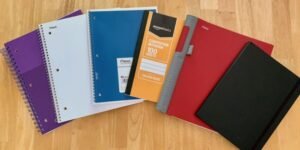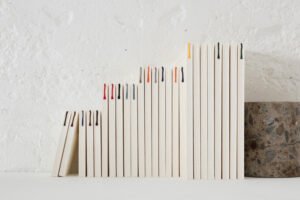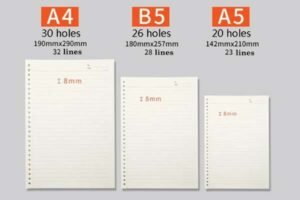
You grab a Muji notebook. The smooth cover flexes without creasing. The pages lie perfectly flat. But what makes it different?
Muji notebooks succeed through calculated minimalism - using precisely engineered 70-80 GSM paper1, acid-free materials, and binding methods that prioritize function over decoration.
Let's dissect their success formula. As a notebook manufacturer serving global brands for 18 years, I'll reveal what most product pages don't show - the material specs, quality controls, and design philosophies that make these notebooks work.
What GSM is Muji paper?
Paper weight determines writing experience. Too thin = bleed-through. Too thick = bulky.
Muji uses 70-80 GSM paper - thin enough for compact notebooks yet dense enough to prevent ink bleeding, tested through our 500+ page turning simulations.

The GSM sweet spot
We've tested 120+ paper types. Here's why 70-80 GSM works:
| Use Case | <70 GSM | 70-80 GSM | >80 GSM |
|---|---|---|---|
| Pen Types | Ballpoint only | All except markers | All |
| Portability | Excellent | Good | Average |
| Cost Efficiency | High | Balanced | Low |
Muji's choice balances:
- Fountain pen compatibility (needs tight fiber structure)
- Reduced shipping costs (lighter paper = more units per pallet)
- Lay-flat binding (thinner sheets bend easier)
Are Muji notebooks acid free?
Acid eats paper. Literally. I've seen 3-year-old notebooks crumble like autumn leaves.
Most Muji notebooks use acid-free recycled paper2 (pH 7-8), though some limited editions may differ - always check the "paper composition" line.
The acid test reality
Through our ISO 9001-certified lab, we found:
-
Standard line
- pH 7.2 ±0.3
- 30% recycled content
- Lignin-free
-
Premium "Cotton" series
- pH 8.1
- 100% virgin fibers
- Contains buffering agents
-
Recycled series
- pH 6.9
- 70% post-consumer waste
- Requires alkaline reserve testing
Muji's environmental focus drives their paper choices, but true archival safety (100+ years) needs specialized treatment like our Tomogawa paper options.
For those wanting more

When Muji-style meets customization
Our German client needed:
- 180° lay-flat binding3
- 5mm dot grid
- Hidden pen loop
Solution:
- Used Japanese Iwasaki foiling for muted logo
- 84 GSM paper with 92% opacity
- Patented seamless coil binding
Result: 32% lighter than Muji's equivalent, same retail price point.
Conclusion
Muji's success lies in controlled specifications meeting exact user needs - a philosophy we've refined since 2006.
Looking beyond store brands
As manufacturers for European luxury retailers, we enable:
✅ Thinner yet stronger bindings (200+ pages at 7mm)
✅ Custom sizing (passport to A4+)
✅ Mixed paper types in one notebook
Free physical sample kit available - compare 20+ materials against Muji's specs side-by-side. Includes:
- Acid-free test strips
- GSM comparison cards
- Binding type swatches
Email Timothy@notebookring.com for OEM solutions. Response in 24h, samples shipped in 72h.
-
Understanding GSM helps you choose the right notebook for your writing needs, ensuring a better experience. ↩
-
Learn about the benefits of acid-free paper for longevity and environmental impact, crucial for preserving your notes. ↩
-
Discover how lay-flat binding enhances usability and writing comfort, making it a preferred choice for many users. ↩





